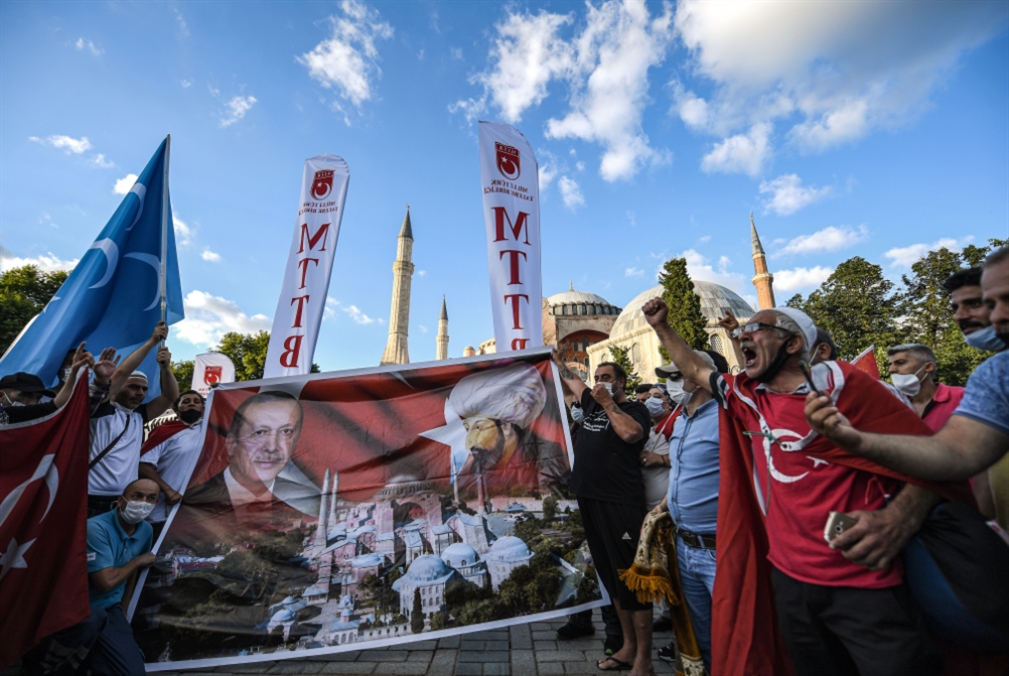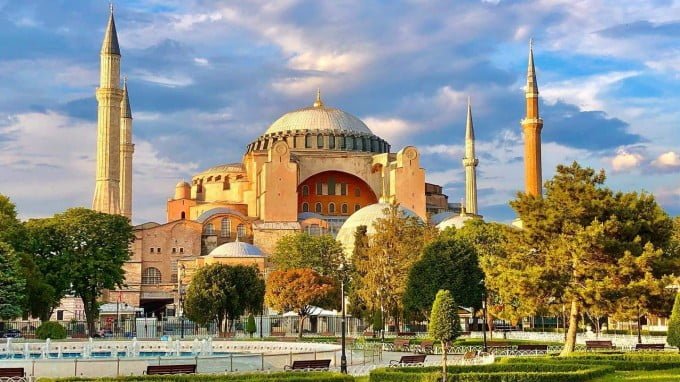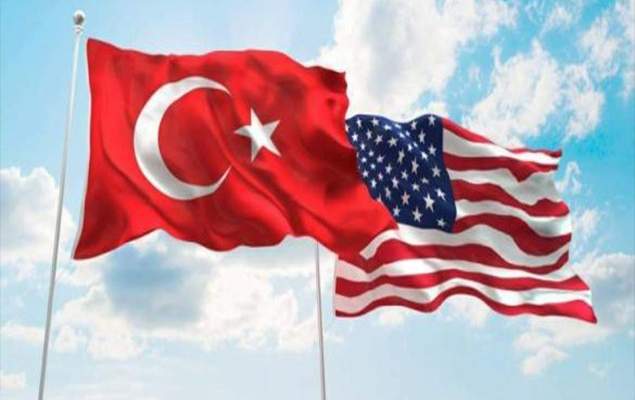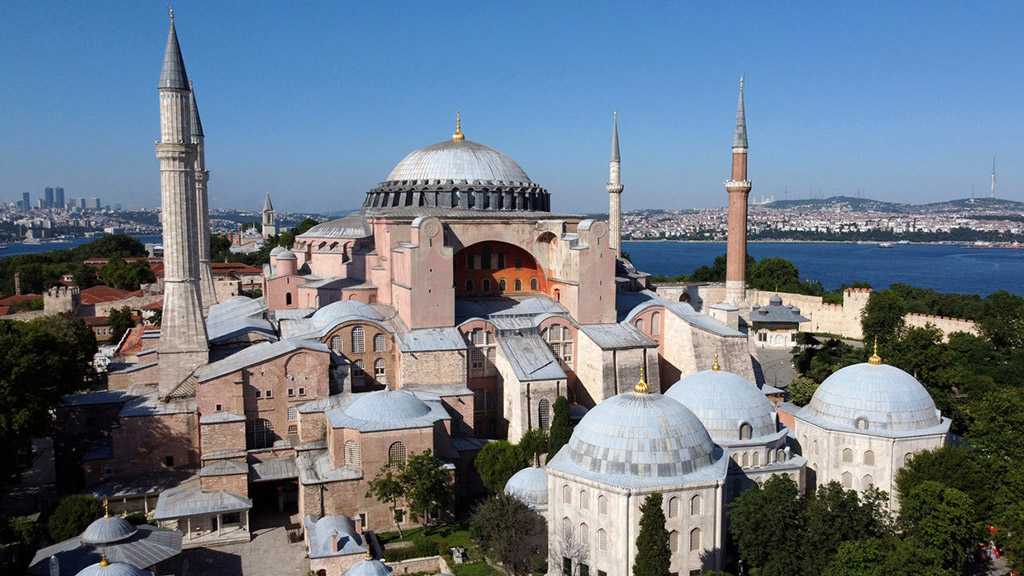November 02, 2022
Germany has become an economic satellite of America’s New Cold War with Russia, China and the rest of Eurasia. Germany and other NATO countries have been told to impose trade and investment sanctions upon themselves that will outlast today’s proxy war in Ukraine. U.S. President Biden and his State Department spokesmen have explained that Ukraine is just the opening arena in a much broader dynamic that is splitting the world into two opposing sets of economic alliances. This global fracture promises to be a ten- or twenty-year struggle to determine whether the world economy will be a unipolar U.S.-centered dollarized economy, or a multipolar, multi-currency world centered on the Eurasian heartland with mixed public/private economies.
President Biden has characterized this split as being between democracies and autocracies. The terminology is typical Orwellian double-speak. By “democracies” he means the U.S. and allied Western financial oligarchies. Their aim is to shift economic planning out of the hands of elected governments to Wall Street and other financial centers under U.S. control. U.S. diplomats use the International Monetary Fund and World Bank to demand privatization of the world’s infrastructure and dependency on U.S. technology, oil and food exports.
By “autocracy,” Biden means countries resisting this financialization and privatization takeover. In practice, U.S. rhettoric means promoting its own economic growth and living standards, keeping finance and banking as public utilities. What basically is at issue is whether economies will be planned by banking centers to create financial wealth – by privatizing basic infrastructure, public utilities and social services such as health care into monopolies – or by raising living standards and prosperity by keeping banking and money creation, public health, education, transportation and communications in public hands.
The country suffering the most “collateral damage” in this global fracture is Germany. As Europe’s most advanced industrial economy, German steel, chemicals, machinery, automotives and other consumer goods are the most highly dependent on imports of Russian gas, oil and metals from aluminum to titanium and palladium. Yet despite two Nord Stream pipelines built to provide Germany with low-priced energy, Germany has been told to cut itself off from Russian gas and de-industrialize. This means the end of its economic preeminence. The key to GDP growth in Germany, as in other countries, is energy consumption per worker.
These anti-Russian sanctions make today’s New Cold War inherently anti-German. U.S. Secretary of State Anthony Blinken has said that Germany should replace low-priced Russian pipeline gas with high-priced U.S. LNG gas. To import this gas, Germany will have to spend over $5 billion quickly to build port capacity to handle LNG tankers. The effect will be to make German industry uncompetitive. Bankruptcies will spread, employment will decline, and Germany’s pro-NATO leaders will impose a chronic depression and falling living standards.
Most political theory assumes that nations will act in their own self-interest. Otherwise they are satellite countries, not in control of their own fate. Germany is subordinating its industry and living standards to the dictates of U.S. diplomacy and the self-interest of America’s oil and gas sector. It is doing this voluntarily – not because of military force but out of an ideological belief that the world economy should be run by U.S. Cold War planners.
Sometimes it is easier to understand today’s dynamics by stepping away from one’s own immediate situation to look at historical examples of the kind of political diplomacy that one sees splitting today’s world. The closest parallel that I can find is medieval Europe’s fight by the Roman papacy against German kings – the Holy Roman Emperors – in the 13th century. That conflict split Europe along lines much like those of today. A series of popes excommunicated Frederick II and other German kings and mobilized allies to fight against Germany and its control of southern Italy and Sicily.
Western antagonism against the East was incited by the Crusades (1095-1291), just as today’s Cold War is a crusade against economies threatening U.S. dominance of the world. The medieval war against Germany was over who should control Christian Europe: the papacy, with the popes becoming worldly emperors, or secular rulers of individual kingdoms by claiming the power to morally legitimize and accept them.
Medieval Europe’s analogue to America’s New Cold War against China and Russia was the Great Schism in 1054. Demanding unipolar control over Christendom, Leo IX excommunicated the Orthodox Church centered in Constantinople and the entire Christian population that belonged to it. A single bishopric, Rome, cut itself off from the entire Christian world of the time, including the ancient Patriarchates of Alexandria, Antioch, Constantinople and Jerusalem.
This break-away created a political problem for Roman diplomacy: How to hold all the Western European kingdoms under its control and claim the right for financial subsidy from them. That aim required subordinating secular kings to papal religious authority. In 1074, Gregory VII, Hildebrand, announced 27 Papal Dictates outlining the administrative strategy for Rome to lock in its power over Europe.
These papal demands are strikingly parallel to today’s U.S. diplomacy. In both cases military and worldly interests require a sublimation in the form of an ideological crusading spirit to cement the sense of solidarity that any system of imperial domination requires. The logic is timeless and universal.
The Papal Dictates were radical in two major ways. First of all, they elevated the bishop of Rome above all other bishoprics, creating the modern papacy. Clause 3 ruled that the pope alone had the power of investiture to appoint bishops or to depose or reinstate them. Reinforcing this, Clause 25 gave the right of appointing (or deposing) bishops to the pope, not to local rulers. And Clause 12 gave the pope the right to depose emperors, following Clause 9, obliging “all princes to kiss the feet of the Pope alone” in order to be deemed legitimate rulers.
Likewise today, U.S. diplomats claim the right to name who should be recognized as a nation’s head of state. In 1953 they overthrew Iran’s elected leader and replaced him with the Shah’s military dictatorship. That principle gives U.S. diplomats the right to sponsor “color revolutions” for regime-change, such as their sponsorship of Latin American military dictatorships creating client oligarchies to serve U.S. corporate and financial interests. The 2014 coup in Ukraine is just the latest exercise of this U.S. right to appoint and depose leaders.
More recently, U.S. diplomats have appointed Juan Guaidó as Venezuela’s head of state instead of its elected president, and turned over that country’s gold reserves to him. President Biden has insisted that Russia must remove Putin and put a more pro-U.S. leader in his place. This “right” to select heads of state has been a constant in U.S. policy spanning its long history of political meddling in European political affairs since World War II.
The second radical feature of the Papal Dictates was their exclusion of all ideology and policy that diverged from papal authority. Clause 2 stated that only the Pope could be called “Universal.” Any disagreement was, by definition, heretical. Clause 17 stated that no chapter or book could be considered canonical without papal authority.
A similar demand as is being made by today’s U.S.-sponsored ideology of financialized and privatized “free markets,” meaning deregulation of government power to shape economies in interests other than those of U.S.-centered financial and corporate elites.
The demand for universality in today’s New Cold War is cloaked in the language of “democracy.” But the definition of democracy in today’s New Cold War is simply “pro-U.S.,” and specifically neoliberal privatization as the U.S.-sponsored new economic religion. This ethic is deemed to be “science,” as in the quasi-Nobel Memorial Prize in the Economic Sciences. That is the modern euphemism for neoliberal Chicago-School junk economics, IMF austerity programs and tax favoritism for the wealthy.
The Papal Dictates spelt out a strategy for locking in unipolar control over secular realms. They asserted papal precedence over worldly kings, above all over Germany’s Holy Roman Emperors. Clause 26 gave popes authority to excommunicate whomever was “not at peace with the Roman Church.” That principle implied the concluding Claus 27, enabling the pope to “absolve subjects from their fealty to wicked men.” This encouraged the medieval version of “color revolutions” to bring about regime change.
What united countries in this solidarity was an antagonism to societies not subject to centralized papal control – the Moslem Infidels who held Jerusalem, and also the French Cathars and anyone else deemed to be a heretic. Above all there was hostility toward regions strong enough to resist papal demands for financial tribute.
Today’s counterpart to such ideological power to excommunicate heretics resisting demands for obedience and tribute would be the World Trade Organization, World Bank and IMF dictating economic practices and setting “conditionalities” for all member governments to follow, on pain of U.S. sanctions – the modern version of excommunication of countries not accepting U.S. suzerainty. Clause 19 of the Dictates ruled that the pope could be judged by no one – just as today, the United States refuses to subject its actions to rulings by the World Court. Likewise today, U.S. dictates via NATO and other arms (such as the IMF and World Bank) are expected to be followed by U.S. satellites without question. As Margaret Thatcher said of her neoliberal privatization that destroyed Britain’s public sector, There Is No Alternative (TINA).
My point is to emphasize the analogy with today’s U.S. sanctions against all countries not following its own diplomatic demands. Trade sanctions are a form of excommunication. They reverse the 1648 Treaty of Westphalia’s principle that made each country and its rulers independent from foreign meddling. President Biden characterizes U.S. interference as ensuring his new antithesis between “democracy” and “autocracy.” By democracy he means a client oligarchy under U.S. control, creating financial wealth by reducing living standards for labor, as opposed to mixed public/private economies aiming at promoting living standards and social solidarity.
As I have mentioned, by excommunicating the Orthodox Church centered in Constantinople and its Christian population, the Great Schism created the fateful religious dividing line that has split “the West” from the East for the past millennium. That split was so important that Vladimir Putin cited it as part of his September 30, 2022 speech describing today’s break away from the U.S. and NATO centered Western economies.
The 12th and 13th centuries saw Norman conquerors of England, France and other countries, along with German kings, protest repeatedly, be excommunicated repeatedly, yet ultimately succumb to papal demands. It took until the 16th century for Martin Luther, Zwingli and Henry VIII finally to create a Protestant alternative to Rome, making Western Christianity multi-polar.
Why did it take so long? The answer is that the Crusades provided an organizing ideological gravity. That was the medieval analogy to today’s New Cold War between East and West. The Crusades created a spiritual focus of “moral reform” by mobilizing hatred against “the other” – the Moslem East, and increasingly Jews and European Christian dissenters from Roman control. That was the medieval analogy to today’s neoliberal “free market” doctrines of America’s financial oligarchy and its hostility to China, Russia and other nations not following that ideology. In today’s New Cold War, the West’s neoliberal ideology is mobilizing fear and hatred of “the other,” demonizing nations that follow an independent path as “autocratic regimes.” Outright racism is fostered toward entire peoples, as evident in the Russophobia and Cancel Culture currently sweeping the West.
Just as Western Christianity’s multi-polar transition required the 16th century’s Protestant alternative, the Eurasian heartland’s break from the bank-centered NATO West must be consolidated by an alternative ideology regarding how to organize mixed public/private economies and their financial infrastructure.
Medieval churches in the West were drained of their alms and endowments to contribute Peter’s Pence and other subsidy to the papacy for the wars it was fighting against rulers who resisted papal demands. England played the role of major victim that Germany plays today. Enormous English taxes were levied ostensibly to finance the Crusades were diverted to fight Frederick II, Conrad and Manfred in Sicily. That diversion was financed by papal bankers from northern Italy (Lombards and Cahorsins), and became royal debts passed down throughout the economy. England’s barons waged a civil war against Henry II in the 1260s, ending his complicity in sacrificing the economy to papal demands.
What ended the papacy’s power over other countries was the ending of its war against the East. When the Crusaders lost Acre, the capital of Jerusalem in 1291, the papacy lost its control over Christendom. There was no more “evil” to fight, and the “good” had lost its center of gravity and coherence. In 1307, France’s Philip IV (“the Fair”) seized the Church’s great military banking order’s wealth, that of the Templars in the Paris Temple. Other rulers also nationalized the Templars, and monetary systems were taken out of the hands of the Church. Without a common enemy defined and mobilized by Rome, the papacy lost its unipolar ideological power over Western Europe.
The modern equivalent to the rejection of the Templars and papal finance would be for countries to withdraw from America’s New Cold War. They would reject the dollar standard and the U.S. banking and financial system. that is happening as more and more countries see Russia and China not as adversaries but as presenting great opportunities for mutual economic advantage.
The broken promise of mutual gain between Germany and Russia
The dissolution of the Soviet Union in 1991 promised an end to the Cold War. The Warsaw Pact was disbanded, Germany was reunified, and American diplomats promised an end to NATO, because a Soviet military threat no longer existed. Russian leaders indulged in the hope that, as President Putin expressed it, a new pan-European economy would be created from Lisbon to Vladivostok. Germany in particular was expected to take the lead in investing in Russia and restructuring its industry along more efficient lines. Russia would pay for this technology transfer by supplying gas and oil, along with nickel, aluminum, titanium and palladium.
There was no anticipation that NATO would be expanded to threaten a New Cold War, much less that it would back Ukraine, recognized as the most corrupt kleptocracy in Europe, into being led by extremist parties identifying themselves by German Nazi insignia.
How do we explain why the seemingly logical potential of mutual gain between Western Europe and the former Soviet economies turned into a sponsorship of oligarchic kleptocracies. The Nord Stream pipeline’s destruction capsulizes the dynamics in a nutshell. For almost a decade a constant U.S. demand has been for Germany to reject its reliance on Russian energy. These demands were opposed by Gerhardt Schroeder, Angela Merkel and German business leaders. They pointed to the obvious economic logic of mutual trade of German manufactures for Russian raw materials.
The U.S. problem was how to stop Germany from approving the Nord Stream 2 pipeline. Victoria Nuland, President Biden and other U.S. diplomats demonstrated that the way to do that was to incite a hatred of Russia. The New Cold War was framed as a new Crusade. That was how George W. Bush had described America’s attack on Iraq to seize its oil wells. The U.S.-sponsored 2014 coup created a puppet Ukrainian regime that has spent eight years bombing of the Russian-speaking Eastern provinces. NATO thus incited a Russian military response. The incitement was successful, and the desired Russian response was duly labeled an unprovoked atrocity. Its protection of civilians was depicted in the NATO-sponsored media as being so offensive as to deserve the trade and investment sanctions that have been imposed since February. That is what a Crusade means.
The result is that the world is splitting in two camps: the U.S.-centered NATO, and the emerging Eurasian coalition. One byproduct of this dynamic has been to leave Germany unable to pursue the economic policy of mutually advantageous trade and investment relations with Russia (and perhaps also China). German Chancellor Olaf Sholz is going to China this week to demand that it dismantle is public sector and stops subsidizing its economy, or else Germany and Europe will impose sanctions on trade with China. There is no way that China could meet this ridiculous demand, any more than the United States or any other industrial economy would stop subsidizing their own computer-chip and other key sectors.[1] The German Council on Foreign Relations is a neoliberal “libertarian” arm of NATO demanding German de-industrialization and dependency on the United States for its trade, excluding China, Russia and their allies. This promises to be the final nail in Germany’s economic coffin.
Another byproduct of America’s New Cold War has been to end any international plan to stem global warming. A keystone of U.S. economic diplomacy is for its oil companies and those of its NATO allies to control the world’s oil and gas supply – that is, to reduce dependence on carbon-based fuels. That is what the NATO war in Iraq, Libya, Syria, Afghanistan and Ukraine was about. It is not as abstract as “Democracies vs. Autocracies.” It is about the U.S. ability to harm other countries by disrupting their access to energy and other basic needs.
Without the New Cold War’s “good vs. evil” narrative, U.S. sanctions will lose their raison d’etre in this U.S. attack on environmental protection, and on mutual trade between Western Europe and Russia and China. That is the context for today’s fight in Ukraine, which is to be merely the first step in the anticipated 20 year fight by the US to prevent the world from becoming multipolar. This process, will lock Germany and Europe into dependence on the U.S. supplies of LNG.
The trick is to try and convince Germany that it is dependent on the United States for its military security. What Germany really needs protection from is the U.S. war against China and Russia that is marginalizing and “Ukrainianizing” Europe.
There have been no calls by Western governments for a negotiated end to this war, because no war has been declared in Ukraine. The United States does not declare war anywhere, because that would require a Congressional declaration under the U.S. Constitution. So U.S. and NATO armies bomb, organize color revolutions, meddle in domestic politics (rendering the 1648 Westphalia agreements obsolete), and impose the sanctions that are tearing Germany and its European neighbors apart.
How can negotiations “end” a war that either has no declaration of war, and is a long-term strategy of total unipolar world domination?
The answer is that no ending can come until an alternative to the present U.S.-centered set of international institutions is replaced. That requires the creation of new institutions reflecting an alternative to the neoliberal bank-centered view that economies should be privatized with central planning by financial centers. Rosa Luxemburg characterized the choice as being between socialism and barbarism. I have sketched out the political dynamics of an alternative in my recent book, The Destiny of Civilization.
This paper was presented on November 1, 2022. on the German e-site
https://braveneweurope.com/michael-hudson-germanys-position-in-americas-new-world-order. A video of my talk will be available on YouTube in about ten days.
- See Guntram Wolff, “Sholz should send an explicit message on his visit to Beijing,” Financial Times, October 31, 2022. Wolff is the director and CE of the German Council on Foreign Relations. ↑
Filed under: American Hegemony, China, Russia, US-led NATO Alliance, USA | Tagged: American oligarch, Anti-Russian sanctions, “cancel Russia”, Biden's Foreign Policy, cold war 2, Crusades, End of Western hegemony, Eurasian union of sovereign and independent nations, Hagia Sophia, LNG, Roman empire, Russian gas and oil, Warhawk Victoria Nuland (Toria) | Comments Off on Germany’s position in America’s New World Order






















